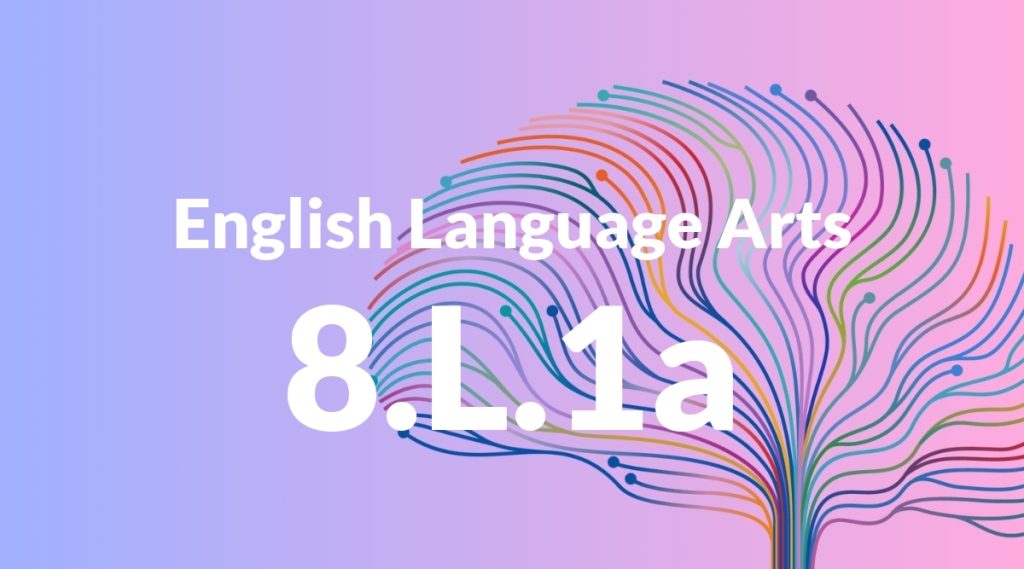Standard: 8.L.1a – Explain the function of verbals (gerunds, participles, infinitives) in general and their function in particular sentences.
Grade level: Grade 8
Subject: English Language Arts
Domain: Language
Teacher Overview
This standard focuses on understanding and explaining the function of verbals—gerunds, participles, and infinitives—in sentences. Mastery of this standard is crucial as it allows students to enhance their writing with more complex sentence structures, improving both clarity and creativity. Students should be familiar with basic grammar concepts such as verbs, nouns, and adjectives, and be able to identify these parts of speech in simple sentences.
After mastering this standard, students will be able to use verbals effectively in their writing, enhancing their ability to create more complex and varied sentence structures.
Common Misconception 1
A common misconception is that students may confuse gerunds with present participles because both end in ‘-ing’. This confusion arises because they look similar, but their functions in sentences are different. Gerunds function as nouns, while present participles function as adjectives or form part of verb tenses.
Intervention 1
To address this misconception, provide clear examples and practice sentences that highlight the difference in function between gerunds and present participles. Use activities where students have to identify and classify ‘-ing’ words in various contexts.
Common Misconception 2
Another misconception is that students might think infinitives always function as verbs. This is incorrect as infinitives can function as nouns, adjectives, or adverbs depending on their use in the sentence.
Intervention 2
Use examples to show that infinitives can function as nouns, adjectives, or adverbs, and have students practice identifying these functions in sentences. Activities could include sentence creation and analysis exercises.
Prerequisite Knowledge
Students should understand basic grammar concepts such as verbs, nouns, and adjectives, and be able to identify these parts of speech in simple sentences.
Subsequent Knowledge
After mastering this standard, students will be able to use verbals effectively in their writing, enhancing their ability to create more complex and varied sentence structures.
Instructional Activities
- Create a chart that lists gerunds, participles, and infinitives with examples.
- Analyze sentences from literature to identify and explain the function of verbals.
- Write a short story or essay using a variety of verbals.
- Conduct peer reviews focusing on the use of verbals in writing.
- Play grammar games that involve identifying and using verbals correctly.




